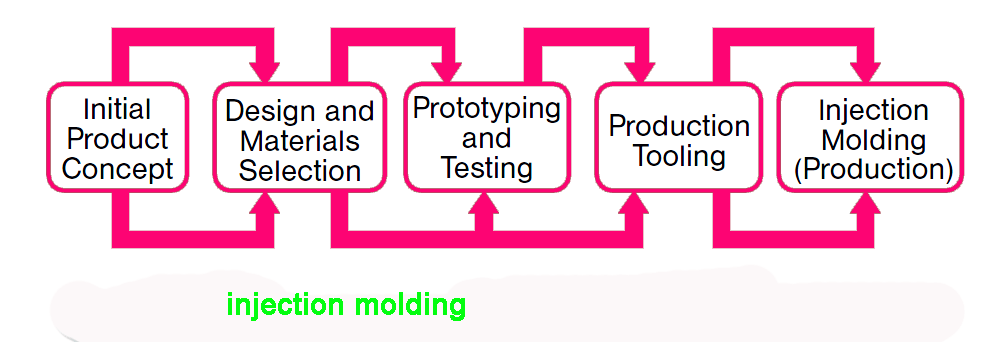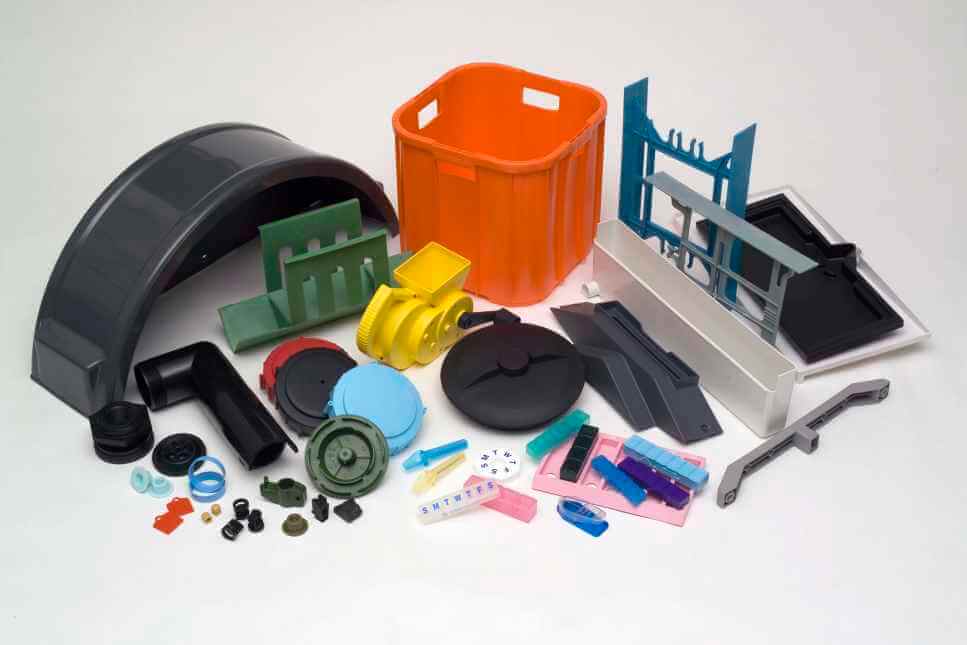Besides producing plastic parts of very complex geometry, injection molding can also mean high production rates. Materials such as thermosetting and thermoplastics can both be used in the process to produce products that meet a variety of end-use needs. A number of aspects need to be considered when designing plastic parts, including aesthetics, functionality, and manufacturing.
Each of these different requirements must be met in the final part design, which in many cases are at odds with each other. A new product can be developed in a variety of ways. This plan relied on incremental engineering or what is known as “over-the-wall” design methods to develop new products or parts. As depicted in Fig. BELOW, new parts or products were designed using this approach.
[process_steps type=”horizontal” size=”default” number=”5″] [process_step title=”MARKETING” icon=”money” icon_color=”#0b43ee”] [/process_step] [process_step title=”INDUSTRIAL DESIGN” icon=”file-picture-o” icon_color=”#13d5ee”] [/process_step] [process_step title=”PRODUCT ENGINEERING” icon=”cogs” icon_color=”#ad08ef”] [/process_step] [process_step title=”TOOLING” icon=”cog” icon_color=”#aaf30a”] [/process_step] [process_step title=”MANUFACTURING” icon=”institution” icon_color=”#f15a08″] [/process_step] [/process_steps]
Marketing groups begin by analyzing the need and specifying the end-use requirements for a product idea and the over-the-wall design process is then initiated. The project is then passed to the next group, typically the industrial design team, for further development. In contrast with manufacturing, industrial designers are most concerned with the ergonomics and esthetics of the product and its overall shape.
In the end, product engineering takes the initial designs and turns them into actual products. Materials, processes, and end-user requirements are typically chosen by the team responsible for project engineering, to ensure the part will meet both the functional and aesthetic requirements. As an example, the industrial designer can decide how the computer housing in Figure looks from the outside.
To support the load associated with the monitor sitting inside the housing, the product engineering department must determine the overall wall thickness and number of ribs to be used. Both theoretical and prototype testing are done by the product engineers. A design is developed by product engineering and passed on to tooling engineers who are responsible for both tool design and tool fabrication.
At this stage in the design process, there may be design issues that require reworking the plastic part geometry. Occasionally, the plastic geometry passed along to the tooling engineers simply can’t be molded.
It is then the responsibility of other product design groups (such as product engineers, industrial designers, etc.) to approve these changes. Depending on how much work needs to be done, this approval process can take a very long time. After the redesign, the product will eventually be manufactured
This approach may produce the right design, but it will probably take more time and money than a simultaneous engineering approach, so it may not be ideal. It is mainly the cost and time associated with downstream design changes that are the main drawbacks of the overarching design approach.
The over-the-wall design process may mean that industrial designers are unaware of the influence that “zero draft” or “reverse injection” will have on the process costs and complexity associated with injection tooling because tooling engineers and industrial designers rarely speak with each other. Once hard tool building begins, design changes are costlier than ever.
Consensual engineering benefits design engineers, marketers, and manufacturing groups by decentralizing the development process and enhancing communication between them. Every group usually has a hand in deciding how the design should be developed. Manufacturing engineers, for instance, have valuable opinions about gate location, gate type, and material grade (from a processing perspective) that may influence designing. In contrast, manufacturing issues would not be discovered until the part(s) are molded and shipped.
Having parallel design and engineering teams is another advantage of concurrent engineering. Tooling and manufacture cannot begin until parts are designed, but a number of engineering and planning activities can be completed during this time. Using CAD integration and meetings, tooling engineers (who determine overall part sizes and shapes) can order steel and components for the production tool.
Engineers who work in manufacturing can ensure that they have access to the right equipment at the right time. A design engineering team may use various tools simultaneously to measure the moldability (e. g., using a computer-aided molding simulation) and structural reliability (e. g., using a computer-aided structural analysis package). Compared to the conventional series approach, this approach can result in significant time savings. During concurrent product engineering, the project leader and team organize themselves so that they are communicative with one another


